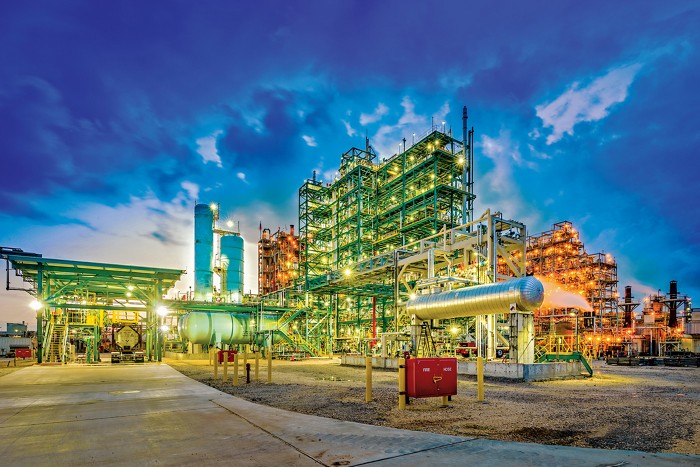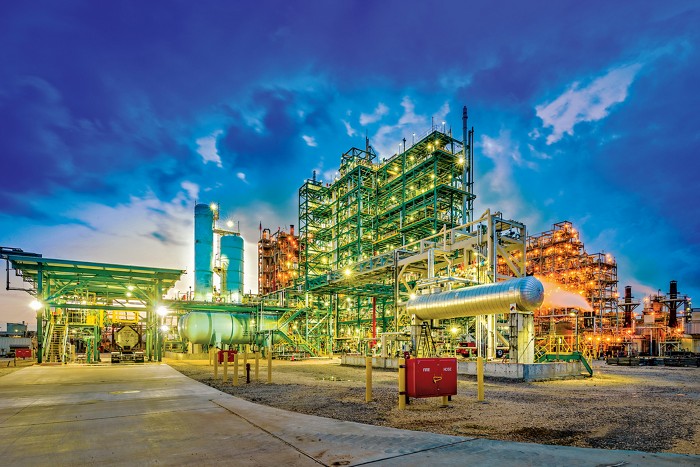Advertisement
Grab your lab coat. Let's get started
Welcome!
Welcome!
Create an account below to get 6 C&EN articles per month, receive newsletters and more - all free.
It seems this is your first time logging in online. Please enter the following information to continue.
As an ACS member you automatically get access to this site. All we need is few more details to create your reading experience.
Not you? Sign in with a different account.
Not you? Sign in with a different account.
ERROR 1
ERROR 1
ERROR 2
ERROR 2
ERROR 2
ERROR 2
ERROR 2
Password and Confirm password must match.
If you have an ACS member number, please enter it here so we can link this account to your membership. (optional)
ERROR 2
ACS values your privacy. By submitting your information, you are gaining access to C&EN and subscribing to our weekly newsletter. We use the information you provide to make your reading experience better, and we will never sell your data to third party members.
Safety
Newscripts
A tale of 2 explosions
by Melissa Gilden
February 23, 2020
| A version of this story appeared in
Volume 98, Issue 8
The elephant in the boom

In 2019, the most-viewed video on TikTok—a short-form mobile video platform—was a chemistry experiment: a massive demonstration of the hydrogen peroxide–potassium iodide reaction known as elephant toothpaste. To date, the 12 s video of four mad scientists in David Dobrik’s backyard pouring four buckets of a mysterious yellow fluid into a giant test tube of blood-red liquid has 183.7 million views on TikTok. The yellow fluid, of course, was potassium iodide, the catalyst that rapidly decomposes hydrogen peroxide. In the video, the potassium iodide was added to a mixture of hydrogen peroxide, water, soap, and red food coloring to create water, iodine, and oxygen gas, which gets trapped in the soap to create the characteristic foamy eruption.
With that TikTok, Dobrik and Nick Uhas, another scientific social media maven, set out to make a world record for the amount of foam produced from an elephant toothpaste experiment. However, after the video went viral, there was social media controversy about the legitimacy of the record-breaking eruption. So, for their next attempt, the duo committed to quadruple the (approximately) 67.5 m3 of foam produced in the viral TikTok clip.
In a video with over 22 million views on YouTube, the scientists put a whopping 625 L of 35% hydrogen peroxide (in addition to the soap, water, and food coloring) in a 1,893 L plastic drum. They then rigged a pulley system, which involved placing a trash can on top of a lifeguard chair, to efficiently dump the 91 L of potassium iodide catalyst into the drum. In the video, a dramatic exothermic reaction is shown, producing approximately 200 m3 of foam.
It might look cool, but the Newscripts gang felt compelled to consult some safety experts.
“I am familiar with this stupidity,” David Katz, a chemistry educator and demonstrator, tells Newscripts. He says that the 35% hydrogen peroxide can cause severe burns.
Furthermore, “the blobs of foam seen floating down the valley could contain unreacted hydrogen peroxide,” which could hurt innocent bystanders, says Sandra Koster, a retired senior lecturer from the University of Wisconsin–La Crosse.
Yikes! Want to try an elephant toothpaste experiment at home? Stick with the safer 3% hydrogen peroxide you can buy at the drugstore. While yeast won’t produce the same dramatic explosion, using that as a catalyst will lead to a slower buildup of foam and be less likely to permanently stain walls. And always, always, always use personal protective equipment.
Whisky fallout

An exceptionally good vintage of Scotch whisky can fetch a pretty penny. In October 2019, the Macallan Fine and Rare 60-Year-Old 1926 sold for $1.9 million at auction. But before you consider dropping your entire paycheck on a bottle of scotch old enough to drink itself, see if you can get your hands on an accelerator mass spectrometer to help you tell if the liquor is as old as it says it is.
Carbon-14—a radioactive isotope used by archaeologists to date artifacts—was released in large amounts into the atmosphere by nuclear bombs like the ones detonated in Japan in Hiroshima and Nagasaki and in tests in the southwestern US. Plants, such as the barley used to make whiskies, take up that 14C. Scientists can use its known half-life of 5,730 years to find out the plants’ age. Naturally, the scientists to take on such carbon dating would be located at the Scottish Universities Environmental Research Centre, near Glasgow.
The researchers used known-age malt whiskies distilled between 1950 and 2015 to create a 14C calibration curve—what they call a “bomb curve”—which they then used to analyze rare whiskies allegedly distilled from 1847 to 1978 (Radiocarbon 2020, DOI: 10.1017/rdc.2019.153).
The findings are a punch in the gut to any lover of fine whisky. Almost half the whiskies tested were not nearly as old as they were purported to be. While the curve used is less precise for whiskies distilled before 1950, a Talisker with a label claiming it was distilled in 1863 could have been distilled as recently as 2007–14.
The researchers are actively looking for barley (or whisky) samples from before 1950 to increase the precision of their curve, if you’re so generous as to part with a 70-year-old bottle. Until then, this Newscriptster will stick to the midshelf standards.
Melissa Gilden wrote this week’s column. Please send comments and suggestions to newscripts@acs.org.





Join the conversation
Contact the reporter
Submit a Letter to the Editor for publication
Engage with us on Twitter